.jpg) |
The Department of Basic Sciences |
The Basic Sciences Department of the Faculty of Para-Medicine consists of four different sections: "Physiology and Biology, Physics, Chemistry, and Anatomy."
A. Physiology and Biology Section:
The Physiology and Biology Section of the Basic Sciences Department is responsible for teaching various courses in physiology and biology as fundamental subjects for various medical science disciplines within the Faculty of Para-Medicine and other faculties. This section, equipped with expert human resources and suitable physical facilities, as well as laboratory and research facilities, actively engages in teaching these courses to undergraduate and postgraduate students. The section currently has three faculty members, including associate professors and assistant professors, who teach various physiology courses, such as cell physiology, cardiovascular physiology, respiratory physiology, renal physiology, gastrointestinal physiology, neurophysiology, endocrine physiology, advanced nutrition physiology, practical physiology, neonatal physiology, etc. to students in various faculties.
The Physiology and Biology Section, in coordination with other departments and educational groups within the faculty, aims to elevate the level of physiology education in line with modern medical science standards. It endeavors to participate in the training of physiology scholars at the master's and doctoral levels in future.
B. Physics Section:
The Physics Section of the Basic Sciences Department possesses suitable physical facilities and laboratory resources for teaching undergraduate, postgraduate, and doctoral students. It offers theoretical courses in general and specialized physics, including biophysics, dosimetry, radioisotopes, ultrasonics, particle physics, and radiation, as well as practical courses like applied physics, practical ionizing radiation dosimetry, practical radioisotopes, practical ultrasonics, practical electronic optics, practical geometric optics, and optics for various Para-Medicine disciplines.
C. Chemistry Section:
The Chemistry Section of the Basic Sciences Department is responsible for teaching various fundamental courses to students in different medical science disciplines in the Faculty of Para-Medicine and other faculties. With expert human resources and suitable physical facilities and laboratory resources, this section actively engages in teaching these courses to undergraduate, postgraduate, and doctoral students. The Chemistry Section includes one faculty member at the rank of professor and one chemistry expert, who are involved in both teaching and research. In the teaching sector, they teach various courses such as mass spectrometry to specialized doctoral students, separation methods (proteins) to specialized doctoral students, organic chemistry (1, 2, and 3), analytical chemistry, instrumental analysis, physical chemistry, advanced synthesis (to PhD students), advanced heterocyclic chemistry (to PhD students), general chemistry, and laboratories for the mentioned courses (general chemistry, physical chemistry, analytical chemistry, and organic chemistry).
In the research field, the section is capable of conducting up-to-date research in metabolomics using NMR and GC-MS, drug interactions with biomolecules, structure analysis of drugs under various conditions, analysis and identification of organic compounds and biomaterials, phytochemistry studies, and the isolation and identification of active ingredients in medicinal plants.
D. Anatomy Section:
The Anatomy Section, as one of the active sections of the Basic Sciences Department, with expert human resources, suitable physical facilities, and audiovisual equipment, is engaged in teaching various anatomy and histology courses to undergraduate and postgraduate students pursuing various disciplines within the Faculty of Para-Medicine. Faculty members in the Anatomy Section teach both theoretical and practical courses in anatomical sciences, including general anatomy, neonatal anatomy, neuroanatomy, histology, cross-sectional anatomy, and histopathology techniques, to students in various undergraduate and postgraduate laboratory science, radiology, radiotherapy, health, nutrition, and other fields at the faculties of Para-Medicine and Nursing.
The mission of the Anatomy Section is to align its activities with other departments and educational groups of the faculty to provide education in anatomical and basic sciences to students at various levels of education. The faculty members aim to enhance the quality of education in line with international standards and make the above-mentioned sciences applicable to each specific field of study.
In the near future, this section aims to become a leading institution in educating postgraduate students in anatomical sciences. Its research objectives will also be realized.
Core values include mutual respect among all staff members, including faculty and non-faculty, special attention to students in academic matters, as well as extra-curricular counseling. The section also emphasizes teamwork.
The general objectives are to provide education in basic sciences to students in various fields of the Faculty of Para-Medicine, with a vision to produce well-educated and skilled individuals who can contribute to the advancement of health through creative research and innovation, while upholding the principles of Islam and the cultural values of the Islamic Republic of Iran.
Mission:
The scope of this group's activities is in the field of education and research. Student education is carried out using the latest teaching methods, aligned with modern standards and in collaboration with other academic institutions. The group endeavors to create a dynamic and scholarly environment, fostering a logical and warm relationship between the group, students, and professors, providing the necessary facilities for study and research in related fields for talented professors and students. This will enable them to gain skills and the ability to actively participate in educational and research fields in society while remaining responsible individuals.
Creating such an environment demonstrates our commitment, dedication, and adherence to the vision of the Islamic Republic of Iran and the role of research and innovation in modern medical education. The group believes that preserving the dignity and rights of individuals, having a work ethic, and promoting health and well-being without discrimination are fundamental aspects of Iranian Islamic culture and the cornerstone of our mission.
Vision:
Attracting elite students and relying on capable professors and modern teaching methods to empower diligent knowledge seekers in acquiring contemporary knowledge and contributing to healthcare enhancement.
General Aims:
1. Generating knowledge in various fields of medical sciences
2. Providing the necessary human resources for the country's educational and research centers
3. Employing the latest scientific findings in the field of medical sciences
4. Equipping different departments of the group with information technology
5. Collaborating and exchanging knowledge and research with other scientific institutions
6. Reviewing the mission and overall objectives of the group every two years

